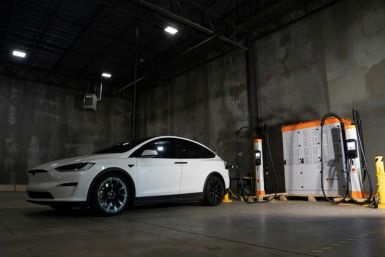What Is La Cosa Nostra, Infamous New York Mafia? FBI Arrests 40 Members Of Five Families Organization

More than 40 members of iconic mafia families were arrested Thursday in New York City, the FBI announced. The agency's Twitter handle revealed early in the day that those who were arrested were members from four La Cosa Nostra crime collectives, including the Genovese, Gambino, Lucchese and Bonanno families.
46 leaders, members and affliates of the La Cosa Nostra have been charged with racketeering conspiracy, arson, illegal trafficking in firearms, and conspiracy to commit assault in aid of racketeering. Of the 46 charged, 39 members have been arrested.
No reports have been made regarding arrests of anyone from the Colombo family, which makes up the fifth family of La Cosa Nostra.
Find out more about the La Cosa Nostra below:
#Breaking more than 40 mobsters from Genovese, Gambino, Luchese, and Bonanno LCN crime families. arrested this AM @NYPDnews @SDNYnews #mob
— FBI New York (@NewYorkFBI) August 4, 2016
What is the La Cosa Nostra? La Cosa Nostra, an Italian phrase which means "our thing" or "our work," is comprised of five original Italian American Mafia families that have been notorious for participating in organized crime in the United States since 1931. The families originated from Sicily, Italy.
Who created the La Cosa Nostra? First formed during the Prohibition area, the Italian American crime organization was created by Salvatore Maranzo. The Sicilian gangster immigrated to the United States in 1925 and shortly after settling in the New York City borough of Brooklyn, he developed a bootleg business distributing alcohol throughout the city and neighboring New Jersey.
After taking down crime leader Joe “The Boss” Masseria in early 1931, Maranzo constructed the original Five Families of New York: his own family and the Profaci family under Joseph Profaci; the Gagliano family under Tommy Gagliano; the Mangano family under Vincent Mangano; and the Luciano family under Charles “Lucky” Luciano.
However, after Maranzo’s murder in September 1931, the organization changed as Luciano came into power and renamed the group The Commission. He awarded Joseph Bonanno the Maranzo family. Carlo Cambino eventually took over the Mangano family while the Gagliano family was later headed by Gaetano “Tommy” Lucchese. After Profaci passed away in 1962, his family was passed on to Joe Colombo. Luciano’s family was succeeded by Vito Genovese, who had worked with Luciano on Maranzo’s execution.
How was the empire built? Each of the five families rose to power through similar means: Racketeering, murder, money laundering, narcotics distribution, alcohol distribution, gambling, loan-sharking, waste management and extortion. Thanks to Maranzo’s institution of omerta (a code of silence) and long payroll list of police officers and politicians, the five families were able to operate effectively for years throughout the United States. However, the institution has crumbled over the years as more and more arrests have been made.
© Copyright IBTimes 2024. All rights reserved.












